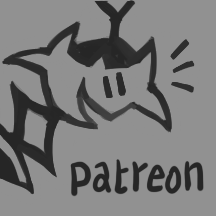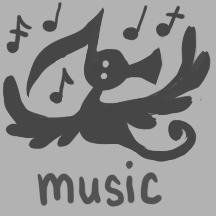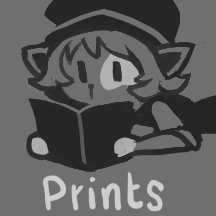Magic
Magic in Floraverse is an extremely broad concept and somewhat difficult to explain, so readers are highly encouraged to interpret magic on their own!
The examples to come are just the bare basics of magic in this world.
Main Categories
There are seven main categories magic can fall under. Each category corresponds to a sense and an elemental affinity, however, it is important to keep in mind that an individual's affinity does not determine or limit what kind of magic they can learn.
(Example: A cat with Air or an Air-based affinity can still conduct magic through incense, but will have an easier time if they did incantations.)
-
Runes - Sight - Spirit
-
Incantations - Hearing - Air
-
Artifacts - Touch - Earth
-
Incense - Smell - Fire
-
Potions - Taste - Water
-
Movement - Balance - Clear
-
Arrangement - Direction - Void
Runes
Thought to manipulate magic through shape and appearance, runes can store magic like a battery or simply contain instructions on how to alter magic, or both! They do not need to be in a pattern; any visual markings, whether its an actual language or not, written with intent and knowledge during the creation will suffice.
Some runes must be created in a specific manner to work, while others can simply be copied through any available process. Any marking which interacts with magic in some way, intentionally or not, can be called a rune. Runes may also be activated or deactivated in any number of ways, depending on the rune. They're especially good at sealing things or setting traps.
Common uses / occurrences
-
Alchemy or magic circles set to transform or act upon anything placed inside them
-
Etched onto other items to change, enhance or hinder their effects. Commonly placed on magical tools, creating a pseudo-artifact which may be deactivated
-
Words that grant temporary / permanent knowledge of a spell, think of finding something like a spellbook or spell scroll in a game
Notable uses / occurrences
-
Kadath's famous "Gold Maker", an alchemy circle that will make any amount of gold placed within it turn into an equal amount of lead. Designed by a disgruntled alchemy professor after being asked one too many times for favors.
-
Granny Jumbo's "Canned Seals", which despite its name does not contain aquatic animals. It is a spray paint which automatically forms minor runes when applied to a surface. One need only write down what annoys them in a perimeter, and Granny Jumbo's Canned Seals will attempt to keep the annoyance out.
-
Bomb-On, a famous rune well known to pranksters and arsonists alike. When carved into an object (must be carved!), Bomb-On will attempt to disrupt the magic inside that object, often resulting in an explosion.
-
Chargers are a family of elaborate and large rune circles designed to hold raw elemental magic, and act as batteries. There is a design of Charger for each known element.
Incantations
Anything audible falls under the category of incantations. They don't have to be real words (humming, chanting, singing, random noise…) if imbued with magic or magical intent, it can be an incantation. They do not need to be heard by anyone or anything to work.
Incantations do not require an intelligent individual. Any sound, naturally occurring or intentional, and whether originating from an individual, a tool, instrument, or natural or unnatural source can count, if imbued with magical intent.
Generally understood as manipulating magic through sound waves. As such, any sound that interacts with magic, intentionally or not, can be called an incantation.
Common uses / occurrences
-
Magical songs (bards often perform incantations)
-
Spoken spells (such as someone uttering words before shooting a fireball or transforming an object or individual)
-
High or low intensity sound waves that use magic to alter matter or other magic in some way
-
As a note: a spellbooks fall under the category of incantations, even though the spells are written down. This is because the spells only work when spoken aloud, unlike runes that perform magic when simply written down.
Notable uses / occurrences
-
Virtuoso Frogero is a very successful traveling street-bard. He imbues all his songs with the impulse and intent to give him money. Unsuspecting travelers who hear his songs often end up dirt-broke. Virtuoso Frogero is banned from playing in most major cities.
-
Rotten, an undertaker from Void Forest, is able to hum at magical frequencies to deaden any kind of pain, spiritual or physical, in an individual.
-
Quiet Storm, a rare atmospheric event which occurs in Candy Mesa. As wind blows through Candy Mesa's maze-like structure, it produces a low hum. This hum can echo through the area and build up to an intensity capable of temporarily dismantling or disabling any type of unshielded or unprotected magic.
-
Maledicia's Regenerating Rancor, a twelve-hundred line poem and tongue-twister that when successfully spoken, makes the speaker regret all their time spent practicing it. Such an effect is practically no effect at all, and regret would be considered typical, but Maledicia's Regenerating Rancor enhances that regret.
Artifacts
Of all forms of magic, artifacts are the most difficult, especially if the individual is non-magical or uneducated in the art since they draw upon the wielder's magic or understanding of the object. Any immaterial or material object that interacts with magic can be considered an artifact. Artifacts may be activated or deactivate on any number of conditions. They may contain their own magic or require an outside source to function, but over time or after being used, they may loose their power. Artifacts that are permanent require a lot of power and skill to create.
It is thought that artifacts contain a part of its creator to help define its purpose or purposes. It is draining on the soul if many powerful artifacts are created in a short amount of time, which can break the individual. They not only require a lot of magic, but also willpower, knowledge, and intent in order to be created, hence why this form of magic is difficult, especially of the creator wants a minimal amount of ill side effects when the artifact is used.
Common uses / occurrences
-
Magic wands
-
Golems
-
Teleporters
-
Anything from the mundane to the extravagant, as long as it interacts with magic
Notable uses / occurrences
-
Scarey the Crow, a golem in the shape of a small crow. Likes to fly about forests at night and scare lone travelers. During the daytime, Scarey the Crow likes to dismantle actual scarecrows. Scarey the Crow is regarded as extremely annoying by farmers.
-
Dead Scythe, a two-handed scythe of unknown origin, currently missing. Its blade is indestructible. It can cut anything, on one condition: the thing to about be cut must currently be dead. Objects having never possessed life cannot be cut by Dead Scythe.
-
Crystalline Poncho, a light, shimmering garment. When worn, immediately causes most individuals to stop noticing the wearer. If worn for an extended period of time, the wearer becomes difficult for other people to remember.
-
Stamp Academy, school building. After a tragedy resulting in the death of its faculty took place, the school was closed and abandoned. Years later, a group of ghost-hunters spent the night at Stamp Academy, hoping to record paranormal activity. They were found the next day, deceased, in the same manner the faculty was found. Entering Stamp Academy is not advised.
Incense
Any magic that becomes modified as the magic is released from a source, either instantly or over time.
Fire nor smell are required for incenses to work or to be considered incense, though both fire and smell are often involved. Magic released, intentionally or naturally, and modified, or not, can be considered incense.
Like potion-making, incense is better to apply magic to large areas or groups and can be modified according to the user's needs.
Common uses / occurrences
-
Smoke-like barriers to keep magic or individuals in or out of an area
-
Therapeutic aromatics, i.e. aromatherapy
-
Sedative or hypnotic vapors
-
Enhancing or dampening gases, i,e, flammable vapors to aid in explosions, or non-reactive mists to prevent explosions
Notable uses / occurrences
-
Neck-Deep Mire's "Headlights", a naturally occurring magical swamp vapor that reacts when viewed, forming floating balls of light. These lights approach anyone who views them. They explode on contact with sentient creatures, so care should be taken not to look at them.
-
Granny Jumbo's "Witch-n-Wizard Away", a smoke bomb. Anyone inside the smoke is thrown into a magically-induced coughing fit, which prevents the uttering of incantations and other spoken spells. To be used with caution, as the smoke affects everyone, not just witches and/or wizards.
-
Teslic Pow-Max, a penetrating vapor that expands when exposed to electricity. Expansion is proportional to voltage. Used to promote internal detonation. Inhaling Teslic Pow-Max is not recommended.
-
Aromi-Eau, a distillation of the dead flower of a Southern Gnoll. Every Aromi-Eau possesses some kind of healing therapeutic aroma when vaporized, and every Aromi-Eau's scent is unique.
Potions
Any concoction, whether its in the form of a drink, salve, paste, etc, and uses or interacts with magic can be considered a potion. Potions are usually produced when magical ingredients are put together via cookery.
Out of all the forms of magic to learn, potions are considered to be the easiest since many recipes only requires the cook to follow instructions and, therefore, they do not have to be magical. Many recipes and techniques can be modified and ingredients can include anything (herbs, artifacts, other individuals.....).
Some recipes do require outside magic, which is where non-magical individuals might run into problems. Some potions also degrade over time, leading to reduced potency or unintended side effects.
Common uses / occurrences
-
Healing potions
-
Magic antidotes / vaccines / poisons
-
Potions that temporarily boost performance in something or imbue the target with a skill or knowledge
Notable uses / occurrences
-
Alchemaster Serendipitee's "Liquid Light", a thick, chalky substance marketed towards those afraid of the dark. When imbibed by an individual, a strong beam of magical light will shoot forth from that individual's every orifice for eight hours.
-
Un-Mud, a body paint made from tar pits found only in the Gnoll territories of Crunchbone. Un-Mud acts as an insulator against magic, and Crunchbone Gnolls often cover themselves with it before entering battles against magic-users.
-
Teslic Degreaser, a highly potent liquid that promotes the breakdown of elemental magic. Normally used to extract raw magic from environmental objects. Highly magical creatures, such as Drops are advised never to come into contact with Teslic Degreaser for any reason whatsoever.
Movement
Gestures, dance, the way our eyes travel along a structure, the way energy flows... movement can be represented by many concepts. Even thoughts and the order they're thought in, this counts! The order in which things happen creates Clear structures which can be followed by others, so movement can be repeated over time and followed in this way.
These abstract order structures allow for the potential of other kinds of actions. Say a dance, for example, holds a story of a war averted. These gestures carry meaning that the universe itself can manifest in a multitude of ways, when the movement is followed. Perhaps a poet is inspired to tell a story of peace reached, as a result. Perhaps an orator gives a moving speech at their next rally in striving for compassion together. These are valid paths of movement that are held open by connecting on the structure in that initial dance.
Movement is at the heart of many of the other forms of magic. The way an artifact is put together, the order of the chants of an incantation, the way the initial rune is charged, the order of ingredients to a potion, and the way smoke is willed to flow in incense... all of these things take into account "movement", even if the practitioner isn't terribly aware of this.
Movement is an important aspect of Rhythmetricism, a facet of Synemetricism that concerns itself with how rituals manifest through time. As such, movement is often associated with timing and rhythms.
Common uses / occurrences
-
Dance to hold a sequence of action or thought
-
Gestures that invoke altered states of mind
-
Planning of magical batteries
-
Organizing flow of ritual happenings for balance
-
Growth of creatures, plants, ideas
Notable uses / occurrences
-
Theracia's Rune-Kit, a slab of clay with lightly charged crystals placed in certain locations, ready for more specific instructions to be applied by the user. Just carve or indent lines between the different crystals according to the instruction booklet (which will contain a series of questions for you to answer thoughtfully), and you have a working battery for your rune!
-
Moone's Ritual Compass, one of a set of compasses made by the famous Moone of Gnawth. If you've got an idea for a ritual you're arranging, but you want to know where to look next, Moon's Ritual Compass works with your natural Clear field to detect openings for your magic to impact the world. Symbols, pictures, words, ideas will form on the compass for you to ponder in the next step of whatever your ritual is.
-
Ripple Dance, a dance started decades ago in Dewclaw by the street performer, Ripple, made to be modified and performed at others. There are countless variations on this dance, with the most notable parts to any given dancer being carried through, and something new being added onto the end that carries the dancer's current wishes into the world. It's thought that only the wishes that one wishes to carry forward will make it into one's own ripple dance.
Arrangement
The organization of the elements present in magic, and the choosing of what is or is not present in any given spell, ritual, what have you... these things make up arrangement. It is also related to manipulation of the seen and unseen, and is at the heart of formal Synemetric rituals.
Think of the placement of items on a ritual altar. If intending to work out a conflict with your spell, for instance, then the placement of the items representing the aspects of the conflict are of crucial importance. If two individuals in the conflict become explosive when alone in a room together, for instance, then it's important to account for that in how items are laid out. This is equally true for the creation of sigils.
If Clear magic and movement are associated with "addition", Void magic and arrangement are associated with "removal". While movement is about the way energy travels, the intentional arrangement of aspects allows for the initial direction and focuses that a ritual will follow. In this way, arrangement and movement are complementary, as arrangement leads to movement, and movement indicates arrangement. Much can be discerned in energetic intentions and focus through what is present, but also through what has been excluded and why.
Common uses / occurrences
-
Purification of a space to remove items and concepts that impede flow
-
Arrangement of items on an altar
-
Curse identification and removal
-
Synemetric rituals spreading from the Central Cardinal or equivalent outwards to the other cardinals
Notable uses / occurrences
-
Xenon's Curse Transformer, an artifact created through Teslic Yard tech and the help of TALwire. This sarcophagus-like item can hold something that is cursed, become charged with the intentions of the way the user wants to change the curse, and then transform the item through holding the new intentions.
-
Gnawth Water, which isn't water from Gnawth, but rather, a perfume created from orange Lethe Lilies that grow along the rivers and lakes in the Gnawth region. Excellent for purifying spaces before rituals.
-
Abstract Athame, a famous knife created by Andrealphus that can cut a pocket dimension out of any space, used often and openly during the early formation of Althar.
See Also
- Floraverse Update - Basic Guide to Magic feat. Alice.





![[Beleth looking bored]](https://floraverse.com/static/images/global-title-foreground-left.png)

![[Andre looking proud of his graffiti]](https://floraverse.com/static/images/global-title-foreground-right.png)






